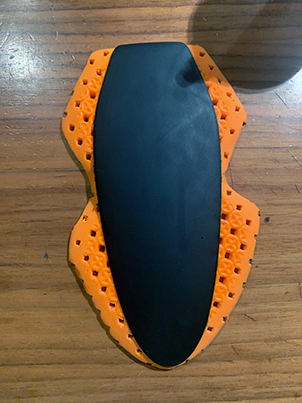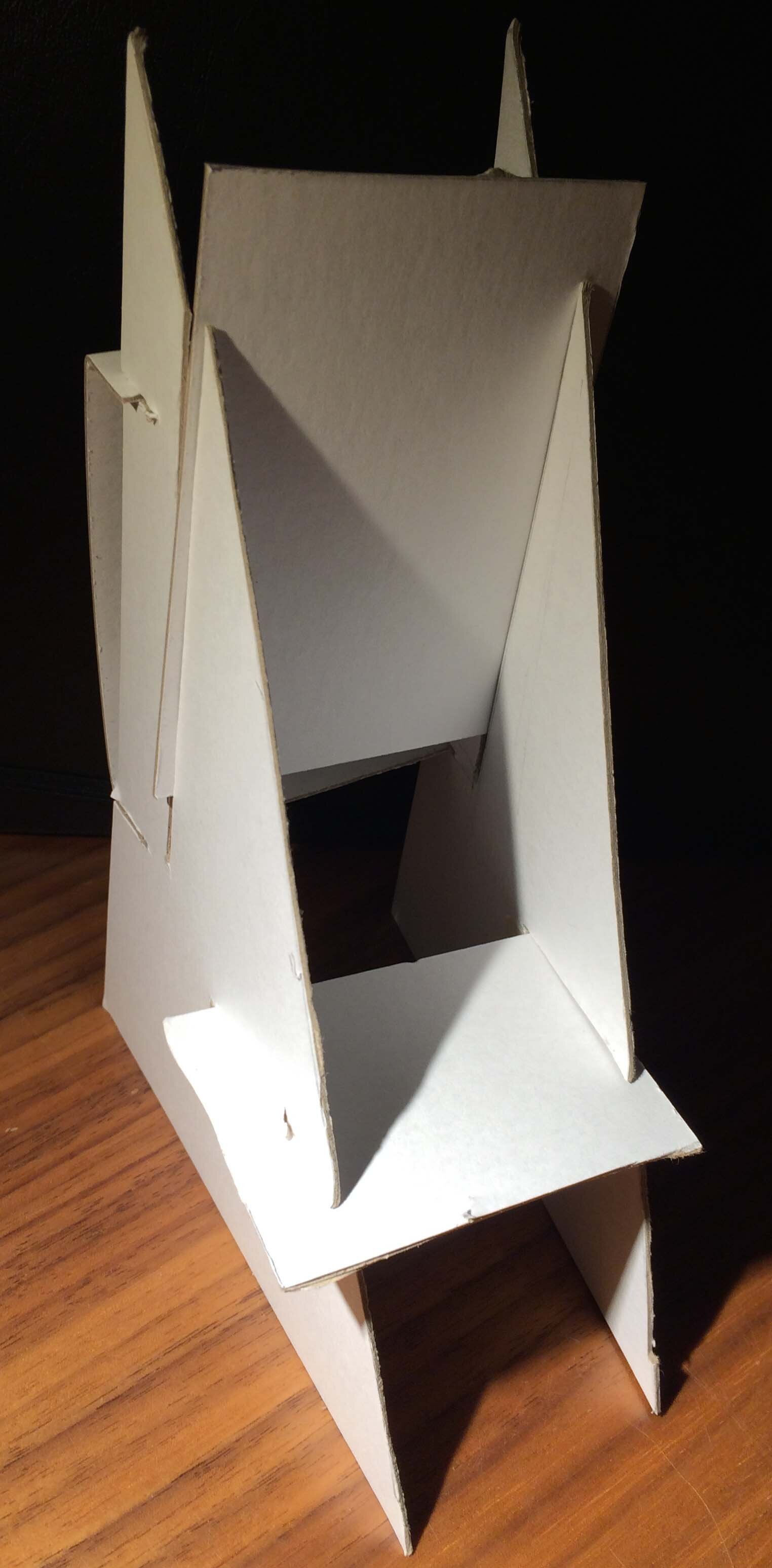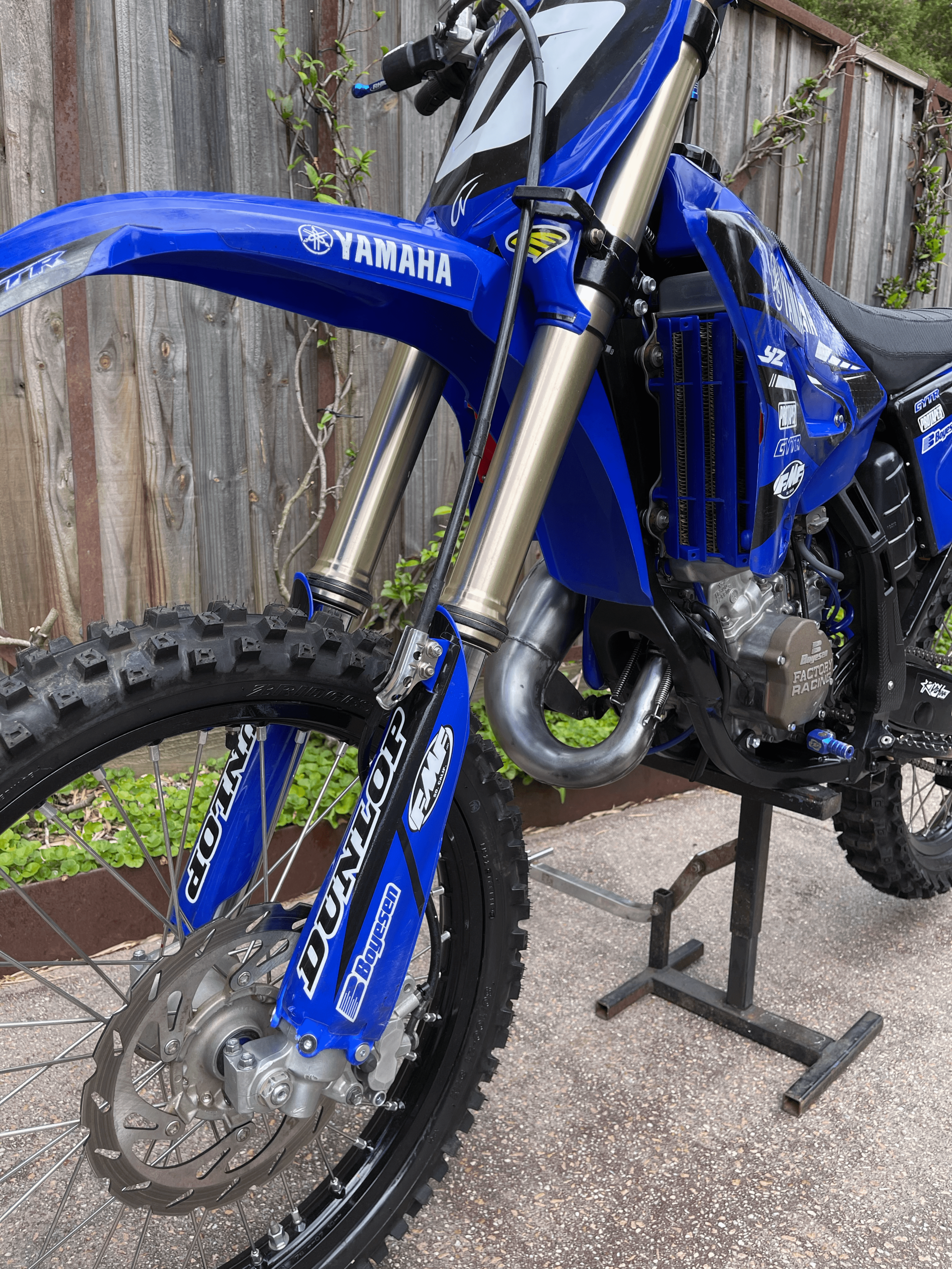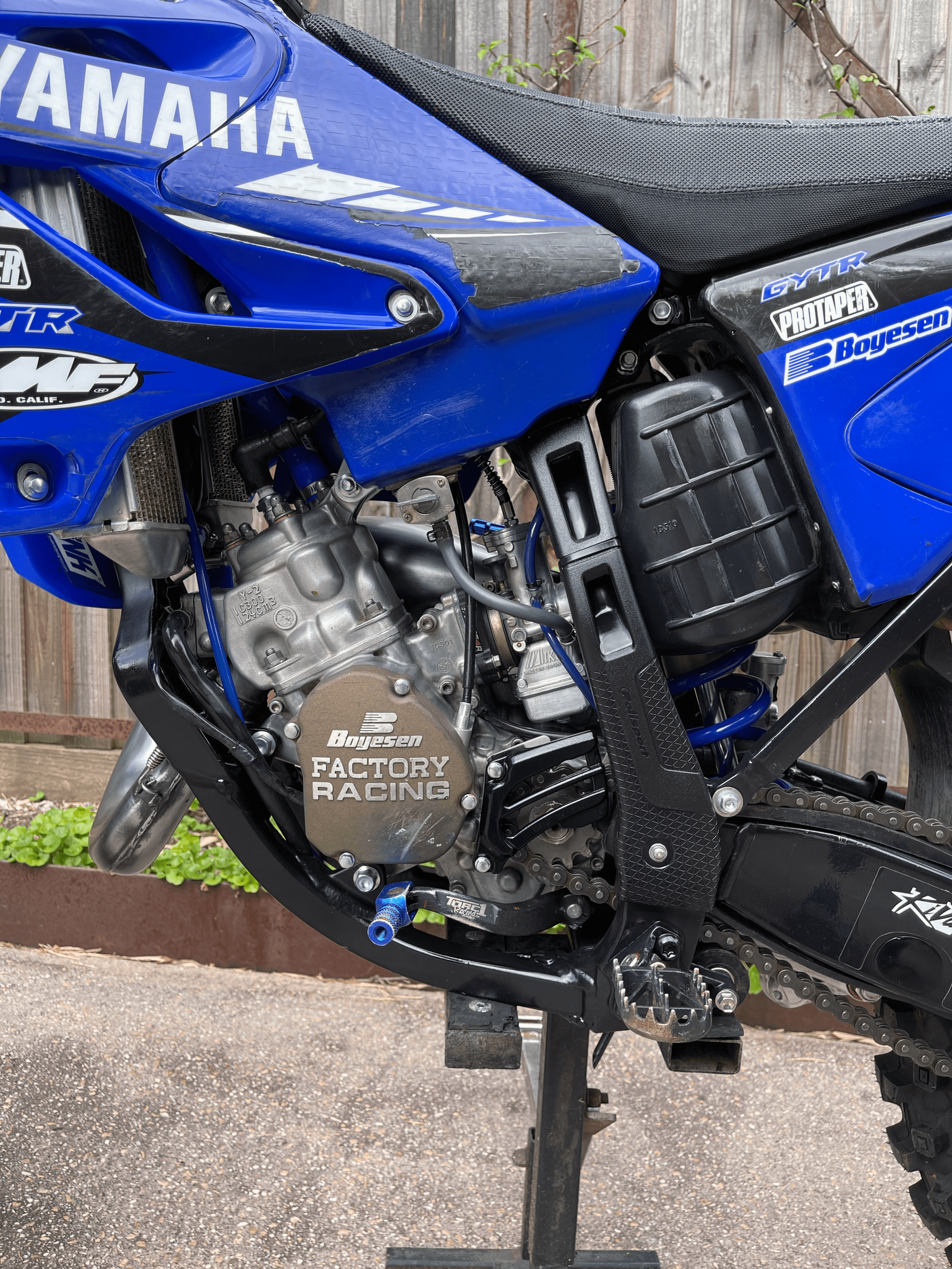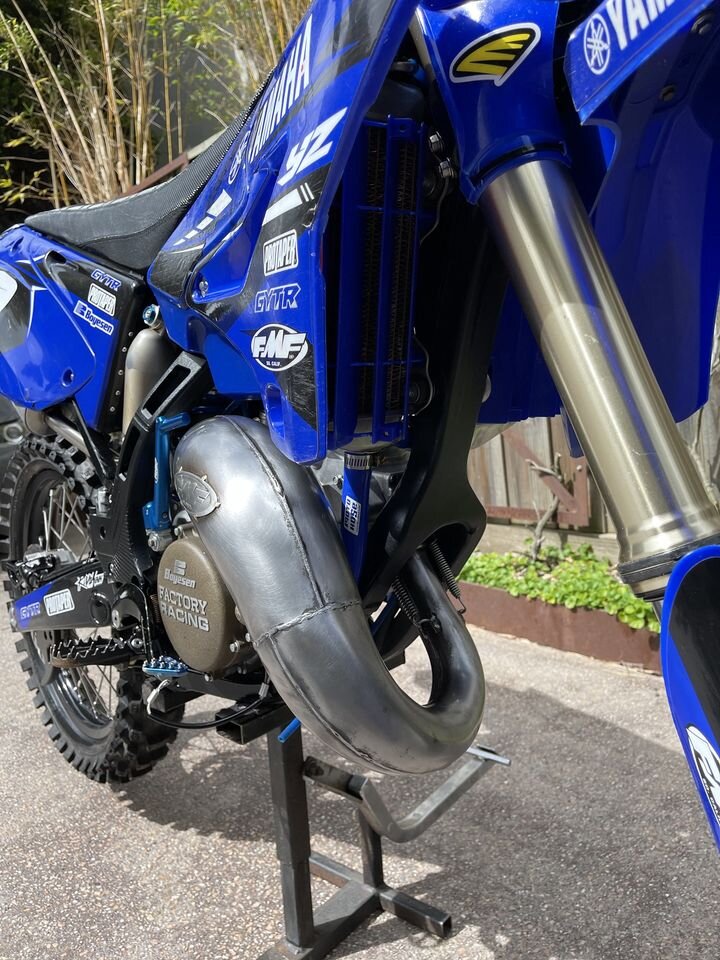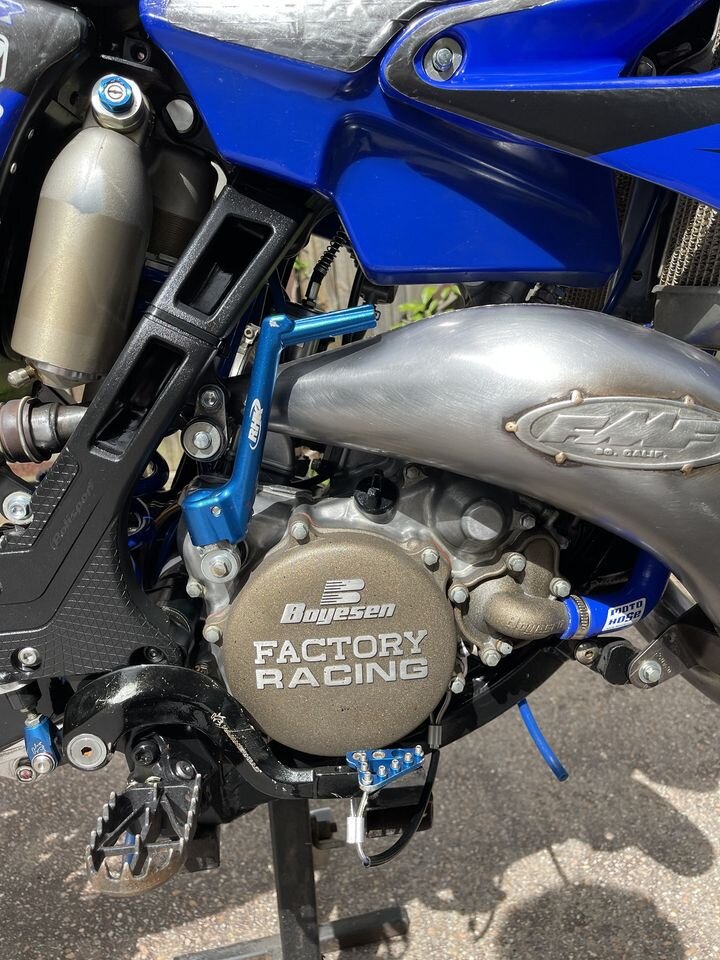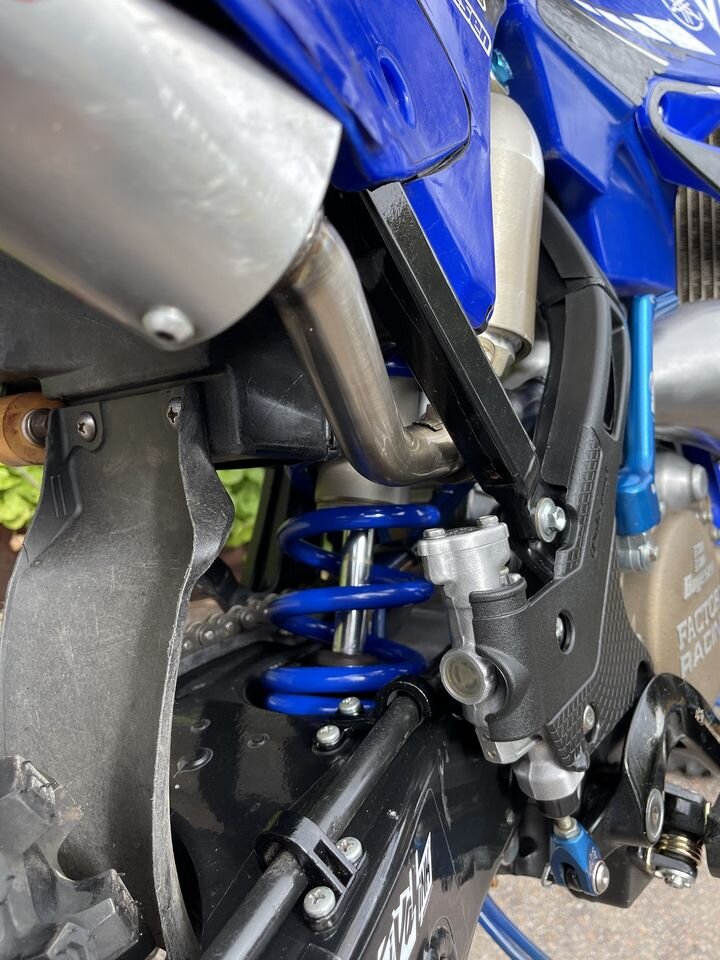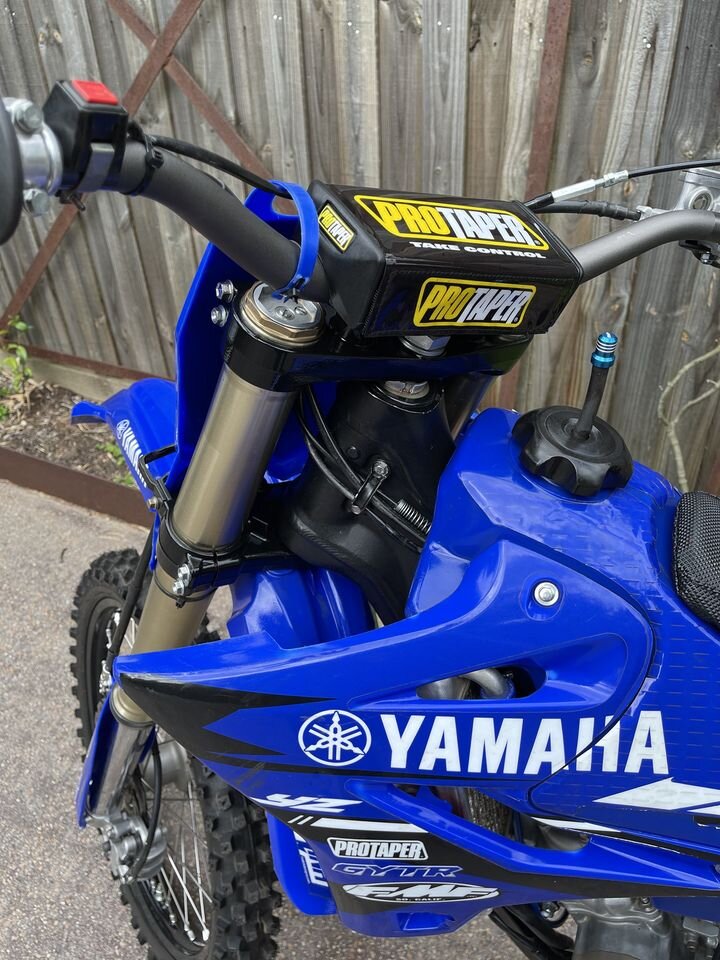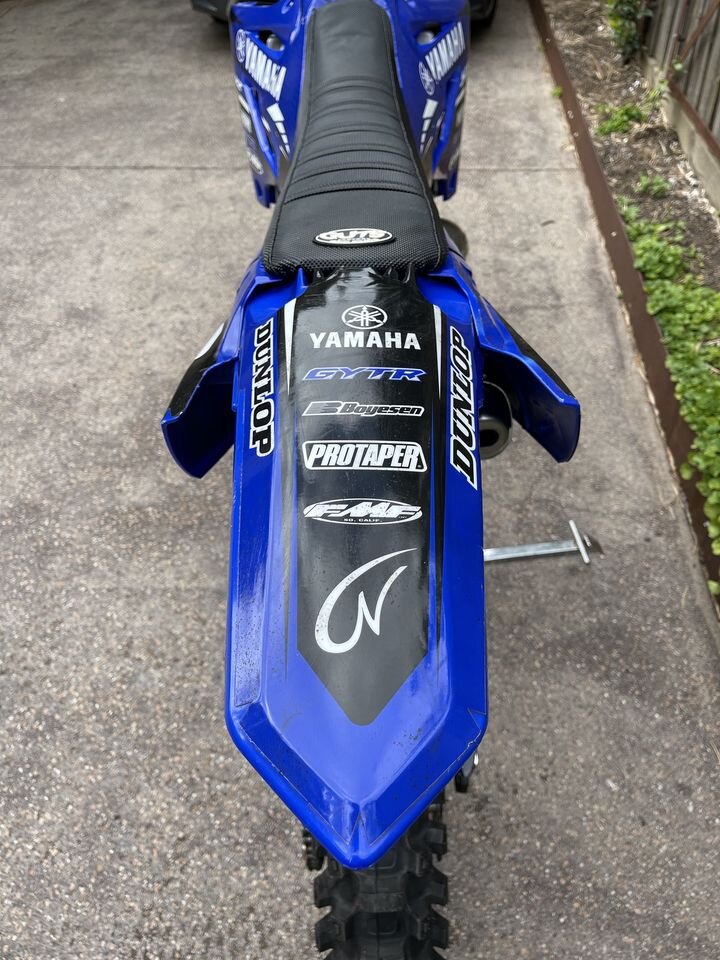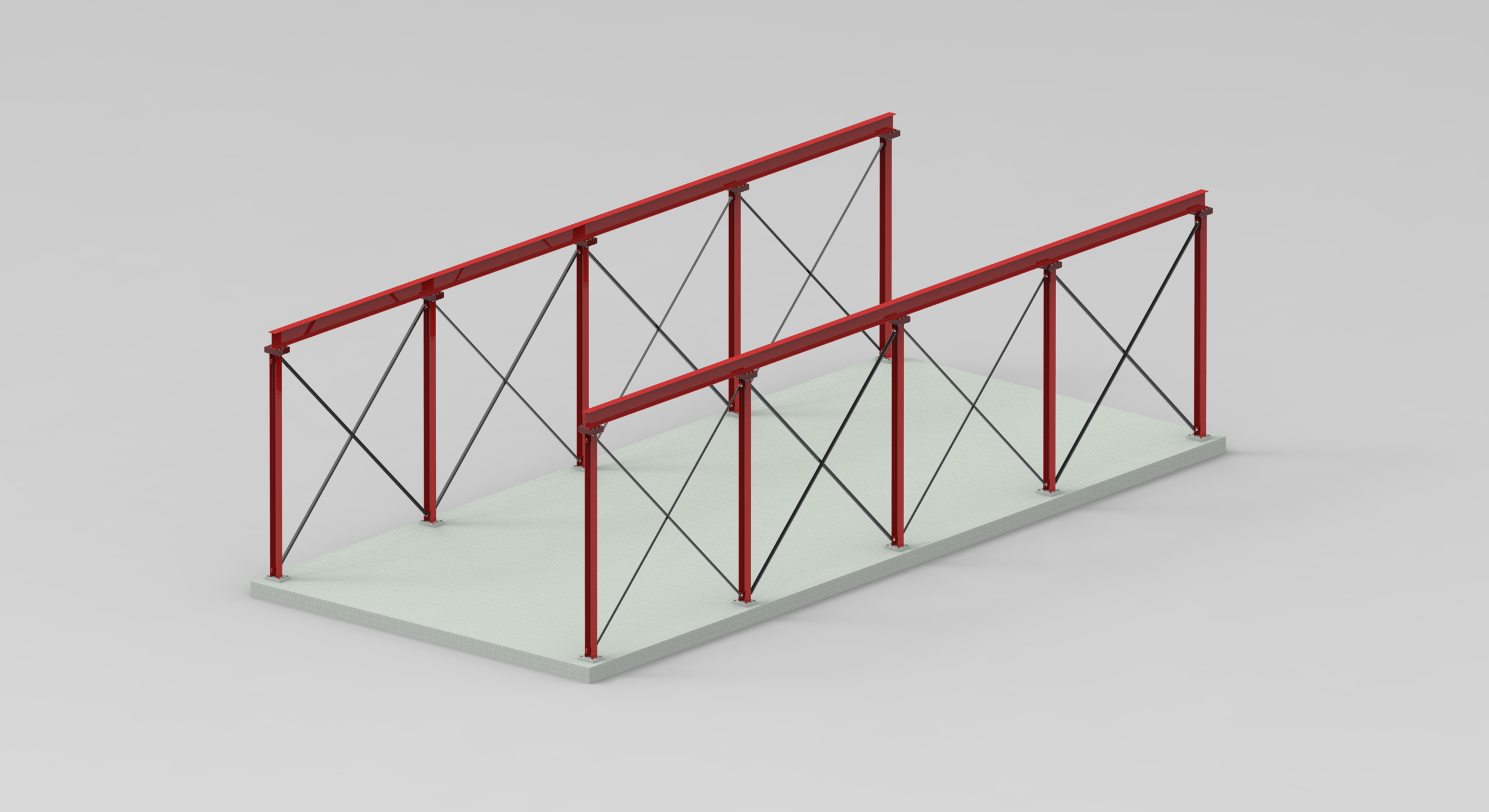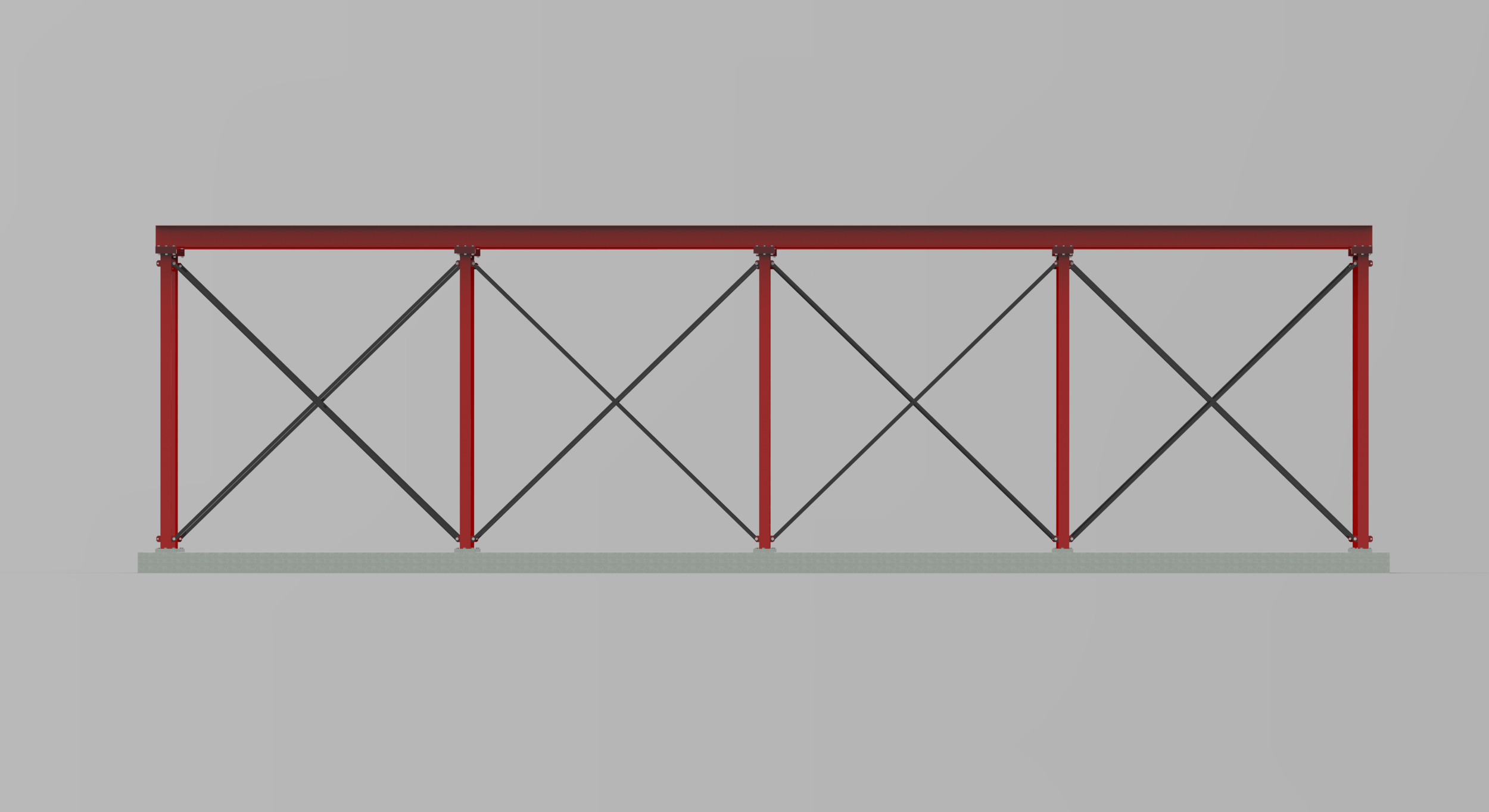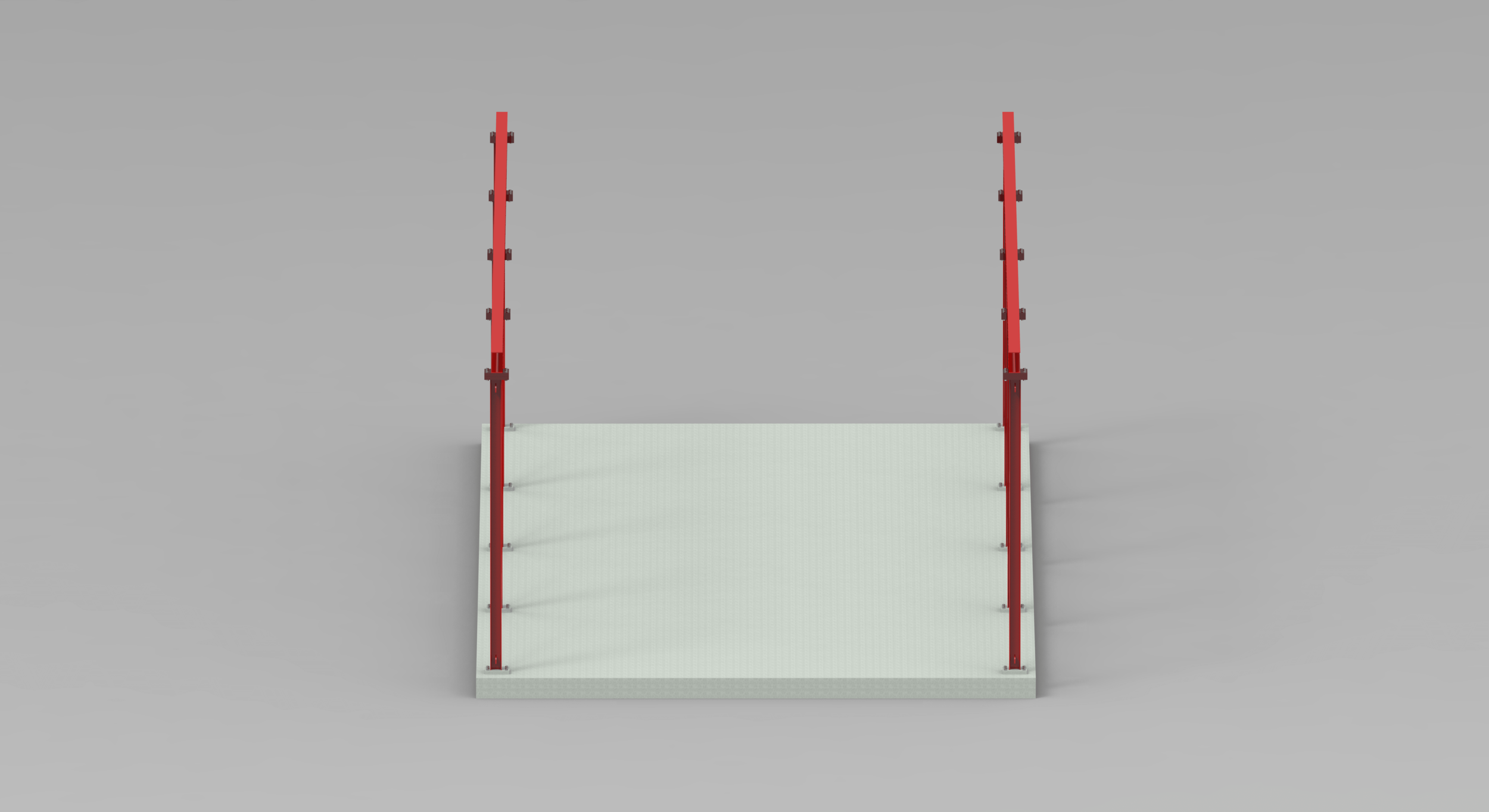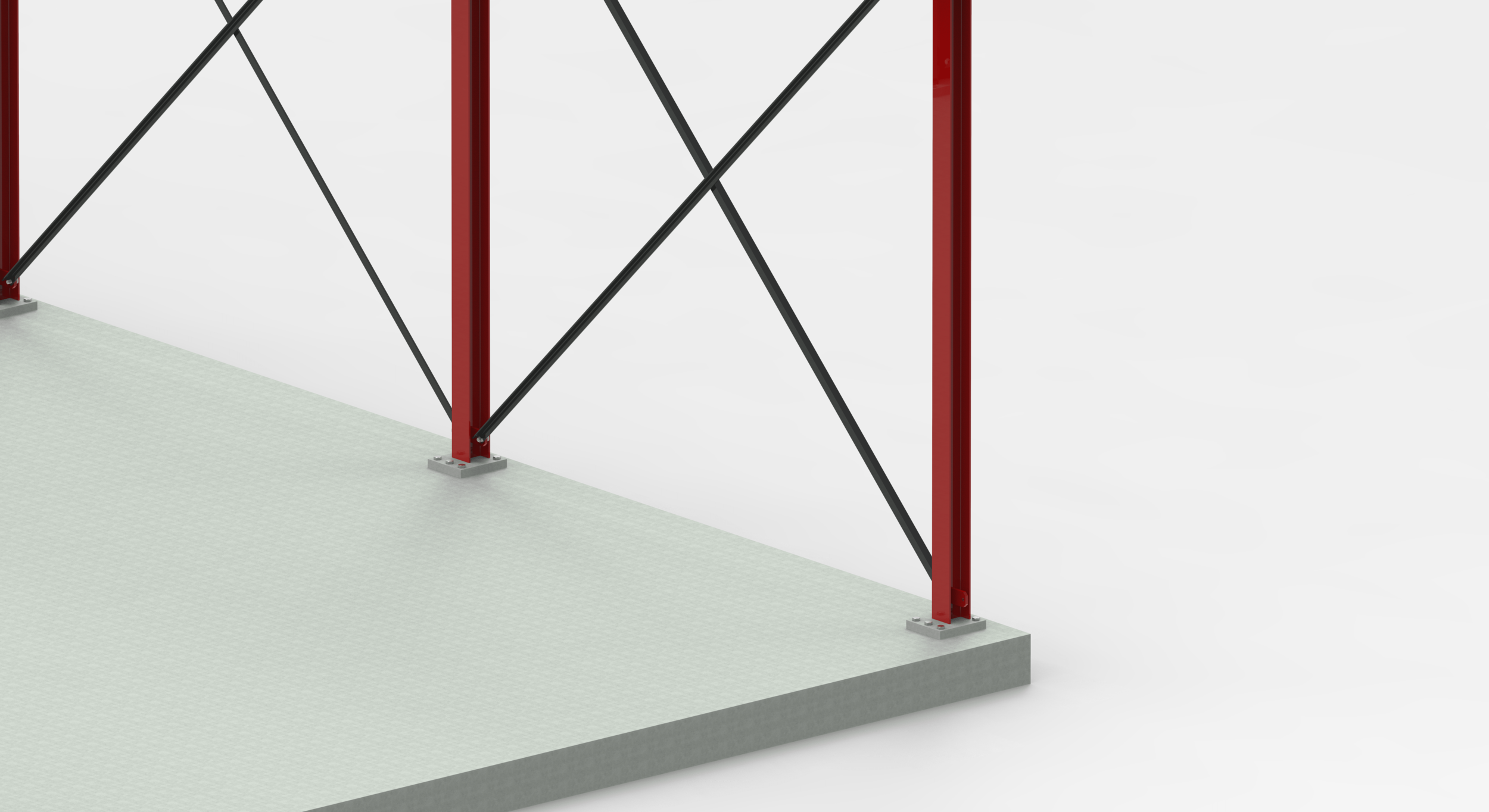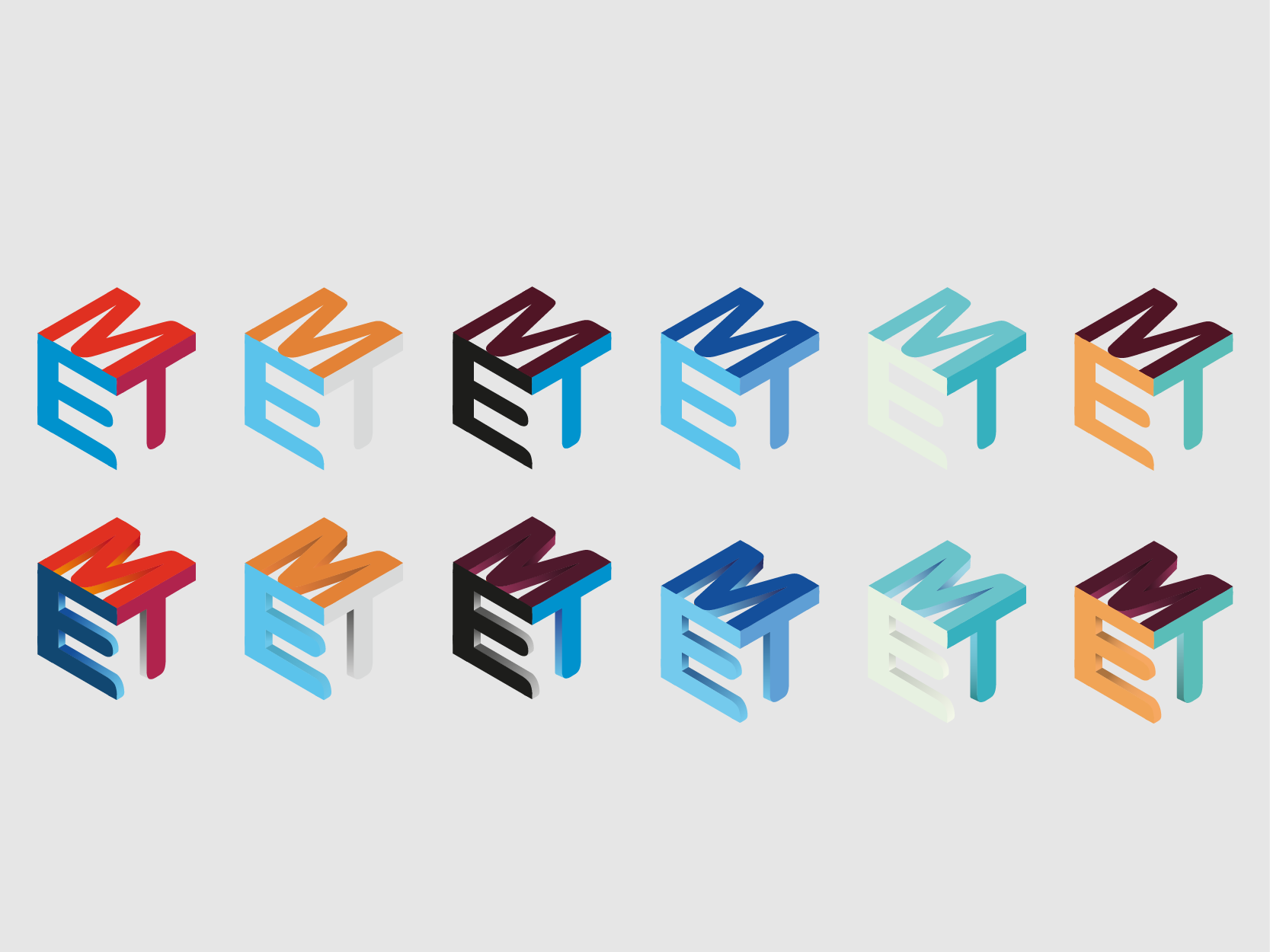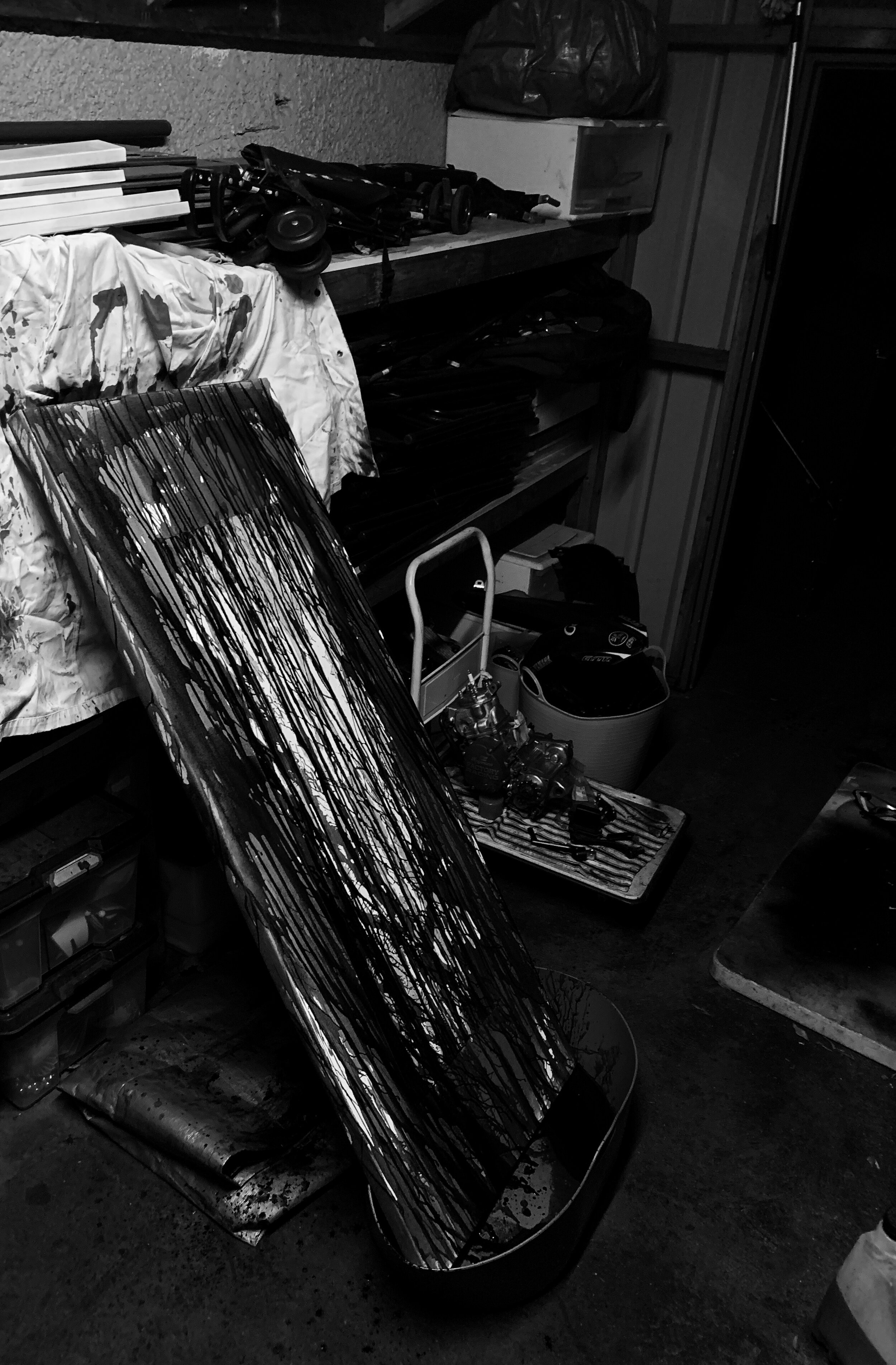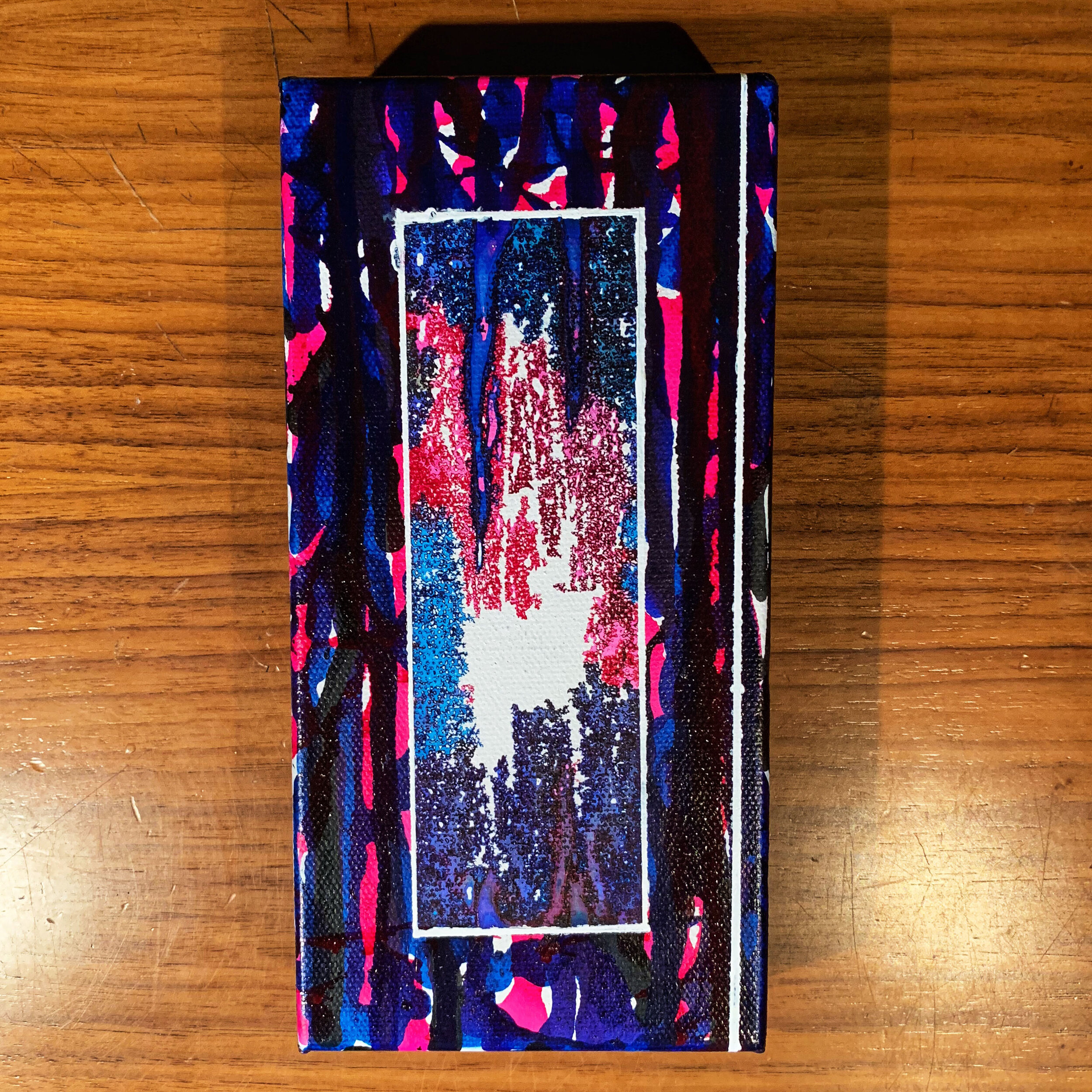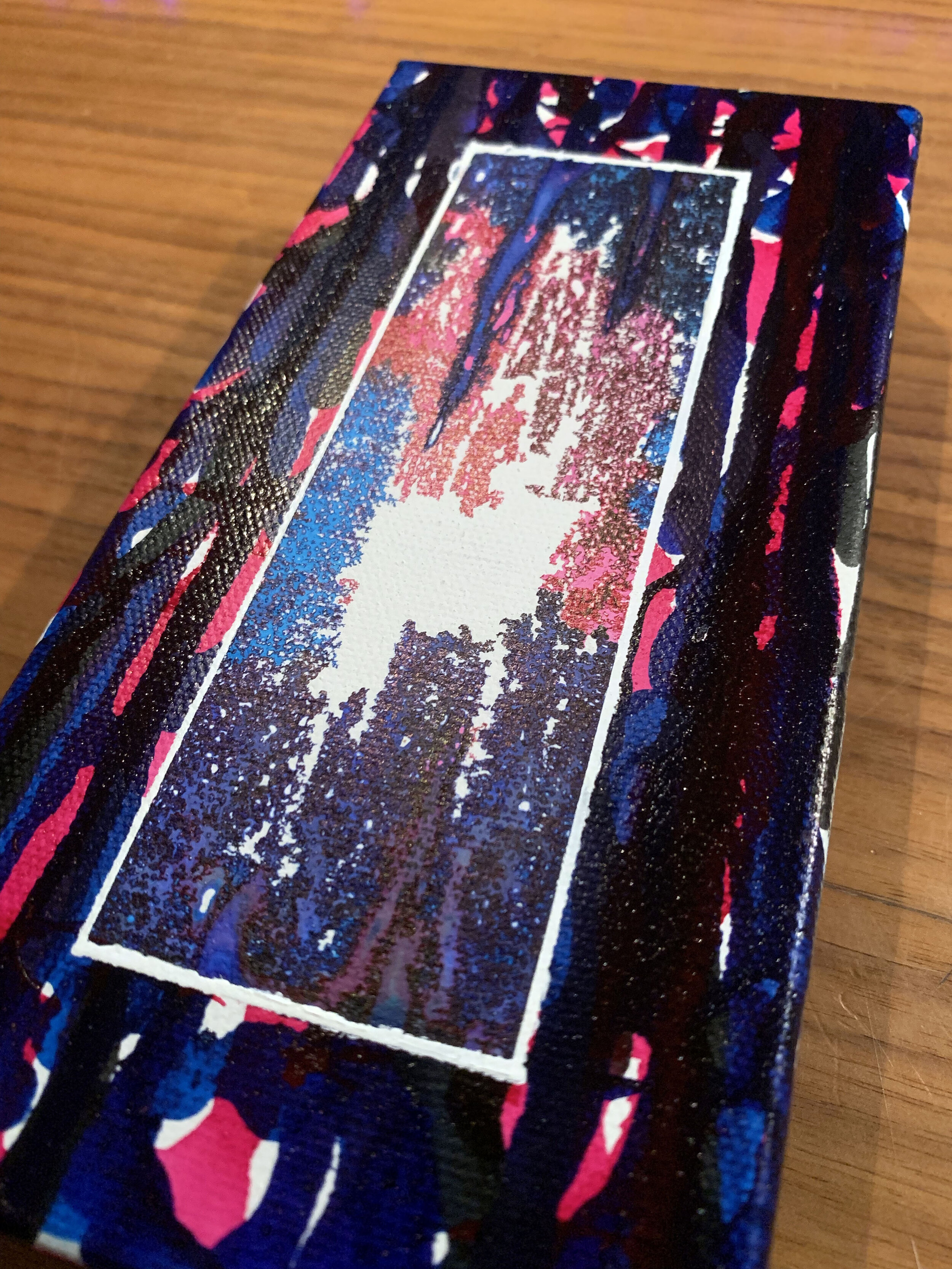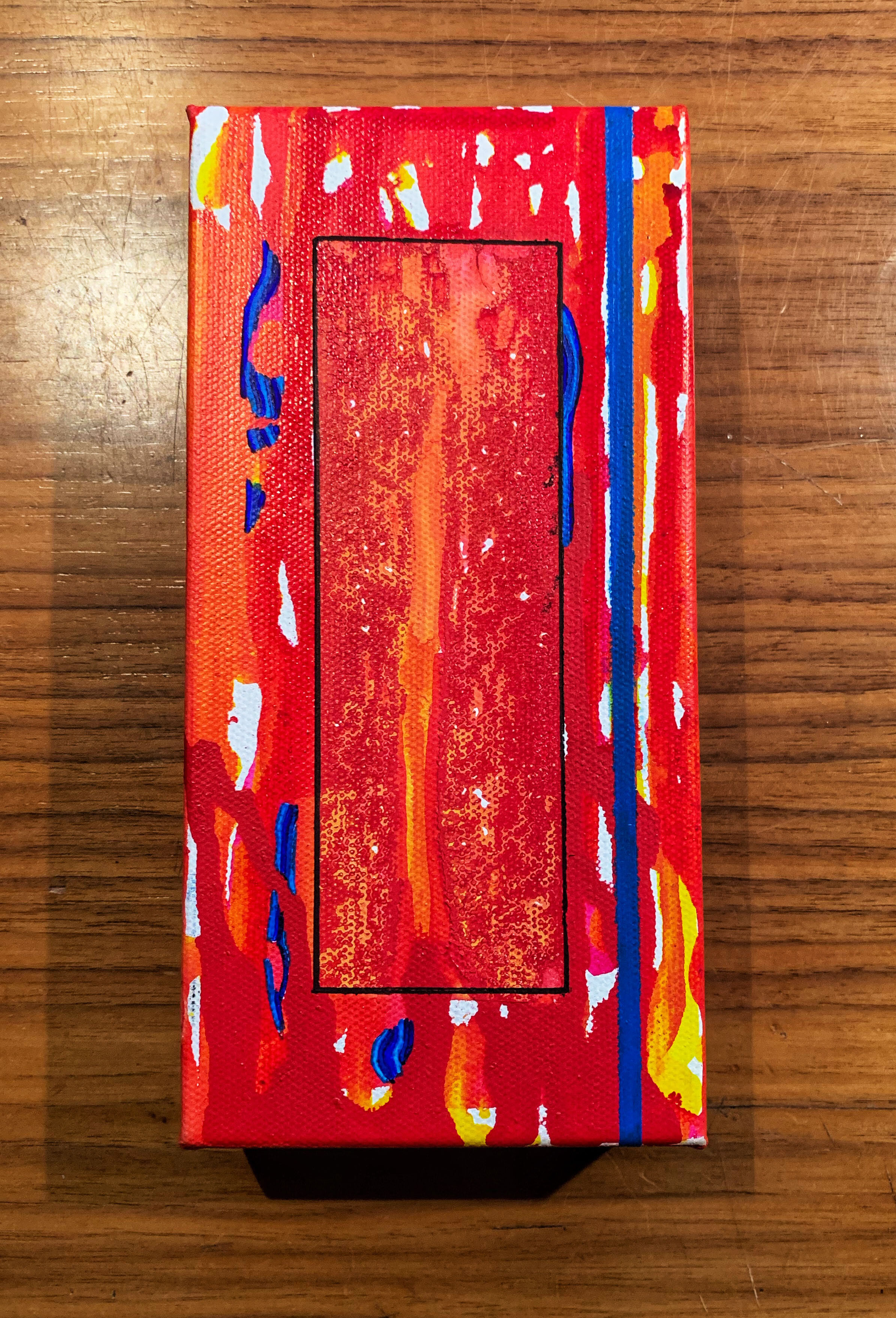Cardboard Chair
For a university assignment I had to create a cardboard chair out of a limited size of 1m x 2m cardboard sheet. I found this quite challenging as the chair had to support an adult and be efficient with the limited amount of cardboard.
Initially some prototypes were made, these prototypes used cut up pieces of cardboard to lace within each other but I found the designs weren’t stable. Adjustments were made and the revised design used only three pieces.
Motorbike Restoration
I have always enjoyed riding motorbikes and have owned my Yz125 since 2010. I worked at McDonalds and would do side jobs to be able to afford it, along with making the 3 hr drive with my dad to pick it up when I was 16. I have owned the bike ever since and unfortunately it has become very worn out and needed to be refreshed. A local competition was taking place called the ‘Gypsey Tales Mid 2k Build Off’ which was a competition where people build the coolest 125cc motorbike that is from the 2000’s. Along with a laundry list of parts that need to be replaced this competition would also give me a chance to show off my bike.
Motorbike: Yz125 2008 model
I had used the bike for a high school graphic design project and although I liked the graphics kit, it highlighted how old and crappy my bike was looking, from rusted parts, multiple blown gaskets, bearings that weren’t rotating it was in need of some tender loving care.
Motorbike before restoration
There was a lot of work to do and personally i had never rebuilt a motorbike to this extent. I wanted to follow a black and blue theme and to keep a “factory” style. To achieve the look desired Powder coating was done to the frame/wheels and ceramic coating parts of the engine that would help with abrasion and engine temperatures. All the parts that needed to be coated, I couldn’t do myself so they had to be done by a third party, this taught me project management as I was trying to have the project done for the ‘Gypsey Tales 125 Bike Build Off’. Along with organising all the parts I had to rebuild and the entire engine something I had never done before, initially this was a very daunting task but with the amount of information that is available online I had some confidence diving into the engine.
Once I had completed the build I was very happy with the final product. The bike looked cool and the riding experience was greatly improved, I had realised how badly the bike ran before It was fixed up and now it was faster and presented excellently. This project taught me how to manage a project under time constraints and how to completely take a motorbike apart and put it all back together.
There were some smaller aspects of the bike I wish I had changed like polishing the hubs of the wheels but overall I couldn’t be more happy with the result. Unfortunately the competition had been postponed due to covid although if it wasn’t for the competition i may have never created such a good looking bike.
list of modifications
Engine
- High flow water pump
- Prox clutch basket and clutch
- Hot rods crankshaft
- all internal bearings replaced
- Vertex high compression piston
- head replaced
- FMF full exhaust system
- Moto Tassinari VForce 4 reeds
- Larger diameter radiator hoses
- GTS engineering power valve upgrade
- Motorx max flow air filter
Body
- Cycra power flow plastics
- guts racing seat cover (kevlar side panels)
- custom 3d printed front brake line guide
- Powder coated satin black frame, sub-frame, swing arm, rims, triple clamps and rear spring
- all bearings replaced
- front and rear Suspension rebuilt
- frame guards
Brakes
- Rebuilt front and rear master cylinder
- Rebuilt front and rear brake callipers
- Replaced front and rear pads
- Custom 3D printed rear brake guards
GANTRY CRANE DESIGN
Currently I am studying Engineering and a task I was assigned was to create a Gantry crane design, this would include spec’ing out the beams used and performing calculations to understand the forces going through the crane and the specific bolts required for the design.
A Gantry Crane is used in large scales like a shipping yard where containers need to be moved or in smaller applications within a warehouse where heavy objects need to be moved.
Gantry crane example
In terms of creating the model in CAD this I found very easy just from previous experience studying Industrial Design, but what I found difficult about this project was performing all the calculations needed to understand the forces involved, where reinforcement was needed and the specific size and specs of the mounting plates for the crane.
My first bike part design
I am an avid bike rider from bmx, mountain bikes to motorbikes, I love doing the sport and have friends who also enjoy riding. Recently a friend of mine broke the chain guide on his bike, I had never design or made a bike part before, so this was a perfect opportunity to try and design a bike part. The brief for this task was to make a Chain Guide ( helps keep the chain engaged on the front cog) that has to work in conjunction with the supplied bracket.
There was already a chain guide that had failed at the mounting point and was showing stress fractures. Measurements were taken and modelling begun.
Chain guide example
This design was okay but showed weakness on the bracket side along with the overall thickness of the part being 6-9mm, this was doubled and gave the part more rigidity.
Version 1
Version 2






